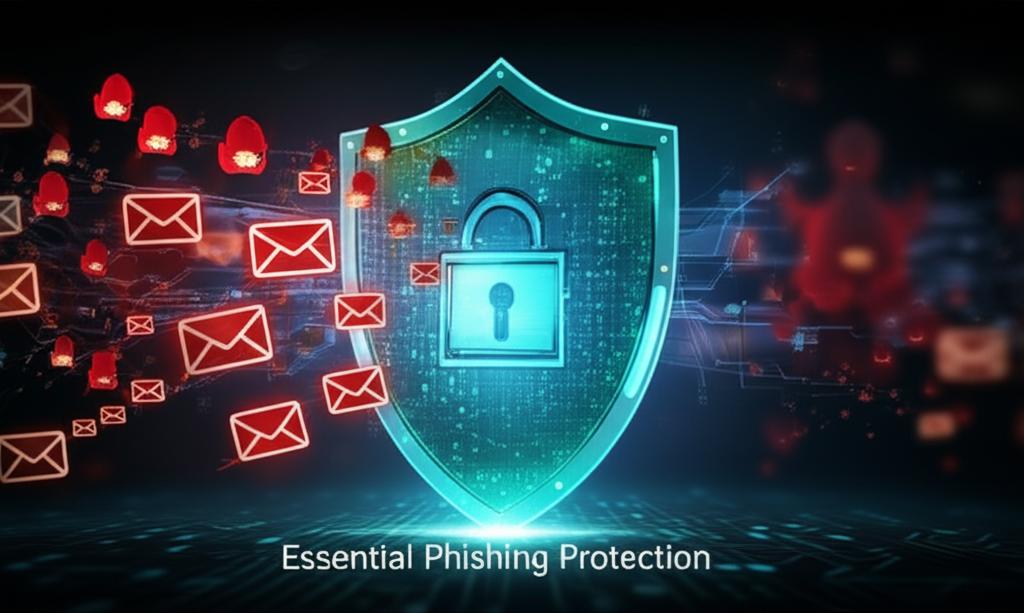Essential Phishing Protection: Defend Your Digital Fortress from Cyber Threats
Understanding Phishing Protection: Your First Line of Defense
In today’s interconnected world, cyber threats are ever-present, with phishing attacks standing out as one of the most common and damaging. Phishing is a malicious attempt to trick individuals into revealing sensitive information, often through deceptive emails, websites, or messages that appear legitimate. This stolen information can range from usernames and passwords to credit card details and personal data, leading to severe financial loss, identity theft, and reputational damage. This is where robust phishing protection becomes not just beneficial, but absolutely essential.
Phishing protection encompasses a range of technologies, strategies, and best practices designed to identify, block, and mitigate these deceptive attacks before they can cause harm. It acts as your digital fortress, safeguarding your valuable data and privacy.
Why is Phishing Protection Crucial in the Digital Age?
The sophistication of phishing attacks is constantly evolving, making them harder to detect without proper safeguards. Cybercriminals leverage advanced tactics like spear phishing, whaling, and smishing (SMS phishing) to target individuals and organizations. Without adequate phishing protection:
- Data Breaches: Sensitive personal and corporate data can be compromised.
- Financial Losses: Unauthorized transactions, bank fraud, and ransom demands become real risks.
- Identity Theft: Stolen credentials can lead to impersonation and long-term reputational damage.
- Malware Infection: Phishing links often lead to the download of ransomware, spyware, or viruses.
- Business Disruption: Attacks can cripple operations, leading to downtime and significant recovery costs.
How Does Phishing Protection Work?
Effective phishing protection employs a multi-layered approach, combining technology with user awareness to create a comprehensive defense. It works by:
- Detection: Identifying suspicious patterns, links, and content in emails and messages.
- Blocking: Preventing malicious emails from reaching inboxes or blocking access to fraudulent websites.
- Warning: Alerting users to potential threats when a suspicious link or email is encountered.
- Education: Training users to recognize and report phishing attempts.
Key Components of Effective Phishing Protection
A comprehensive phishing protection strategy integrates several critical tools and methods:
- Advanced Email Filtering: These systems scan incoming emails for tell-tale signs of phishing, such as suspicious senders, unusual content, malicious attachments, and misleading links. They often use AI and machine learning to adapt to new threats.
- URL and Link Scanning: Before a user clicks, advanced protection tools analyze links for known malicious domains, redirects, and suspicious parameters. Some services even sandbox links to test their destination safely.
- AI and Machine Learning: AI-driven tools can detect anomalies in communication patterns and content that human users might miss, providing predictive phishing protection against zero-day threats.
- Multi-Factor Authentication (MFA): Even if credentials are stolen through phishing, MFA adds an extra layer of security, making it significantly harder for attackers to gain access to accounts.
- Browser-Based Protection: Modern web browsers include built-in features that warn users about potentially fraudulent websites and block access to known phishing sites.
- User Education and Training: Arguably the most vital component, human firewalls are created when individuals are educated on how to spot, avoid, and report phishing attempts.
Best Practices for Robust Phishing Protection
While technology plays a significant role, individual vigilance is paramount. Here are best practices to bolster your phishing protection:
- Always Verify: If an email or message seems suspicious, verify the sender’s identity through an alternative, trusted channel (e.g., calling them directly).
- Hover Before Clicking: Hover your mouse over links (on a desktop) to preview the actual URL before clicking. Look for mismatches or unusual domains.
- Use Strong, Unique Passwords: Employ complex passwords for all your accounts and never reuse them. A password manager can help.
- Enable Multi-Factor Authentication (MFA): Activate MFA on all accounts that support it for an added layer of security.
- Keep Software Updated: Regularly update your operating system, web browsers, antivirus, and other applications to patch security vulnerabilities.
- Report Suspicious Activity: If you receive a phishing attempt, report it to your IT department, email provider, or relevant authorities.
- Be Skeptical: If an offer seems too good to be true, or a request creates a sense of urgency, it’s a red flag.
Choosing the Right Phishing Protection Solution
For businesses, selecting the right phishing protection solution involves assessing your organization’s specific needs, risk profile, and budget. Key considerations include integration with existing systems, scalability, reporting capabilities, and the level of user training provided. Individuals can leverage built-in browser protections, email provider security features, and reputable antivirus software.
Conclusion: A Proactive Stance on Digital Security
Phishing attacks are a constant threat in the digital landscape. Implementing effective phishing protection is no longer optional; it’s a critical component of personal and organizational cybersecurity. By combining advanced technological safeguards with continuous user education and adherence to best practices, you can significantly reduce your vulnerability and defend your digital fortress against even the most cunning cyber threats. Stay vigilant, stay informed, and stay protected.







